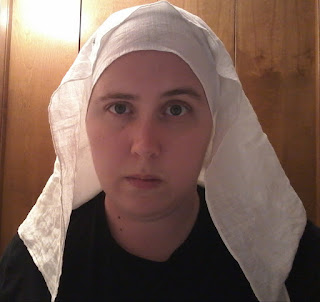The Challenge: Floral. Make a dish named for, shaped like, flavored with, or decorated in flowers.
I initially wanted to make a savory dish flavored with sage, proving an excuse to use some of these flowers for a garnish:
 |
| They are very pretty sage blossoms. |
But then I found this herbal tea recipe, and decided I needed to try that instead.
The Recipe: Another British Substitute for Foreign Tea from The New Receipt Book.
The Date/Year and Region: 1829, London
How Did You Make It: I picked a moderate handful of lemon balm leaves (having plenty of that but no other balm available), as well as 9 large sage leaves and a similar number of lavender flowers. I placed these in a tea pot, added boiling water, and steeped for about 5 minutes.
Time to Complete: Enough time to boil water.
Total Cost: All out of the garden.
How Successful Was It?: Very easy and a pleasant taste-- the three flavors work well together, and each get their own notes.
I served the tea with lemon (York) biscuits from The Complete Biscuit and Gingerbread Baker's Assistant (1854). The biscuits were robust in texture and moderately dense without being as heavy as some other receipts I've tried. The lemon juice make for a delicate lemon flavor (which ws hard to detect when hot, but came through better when eaten cold); to the latter batch I added the peel of the lemon, which made for a stronger lemon flavor, almost bitter at times. [One-third scale, with 4 oz of butter, used juice and peel of 1 lemon.]
How Accurate Is It?: Very. I even used the 1850s wood-burning stove.
 |
| Lemon balm, sage and lavender for tea. Brewed, it had a pale green-yellow color. |
 |
| Lemon biscuits. |
I served both at a tea party which also featured Quin's cup-cakes and a savory cabbage pudding. A sneak peak of the whole spread:
 |
| The floral tea party was a relaxing way to end the busy long weekend. |












